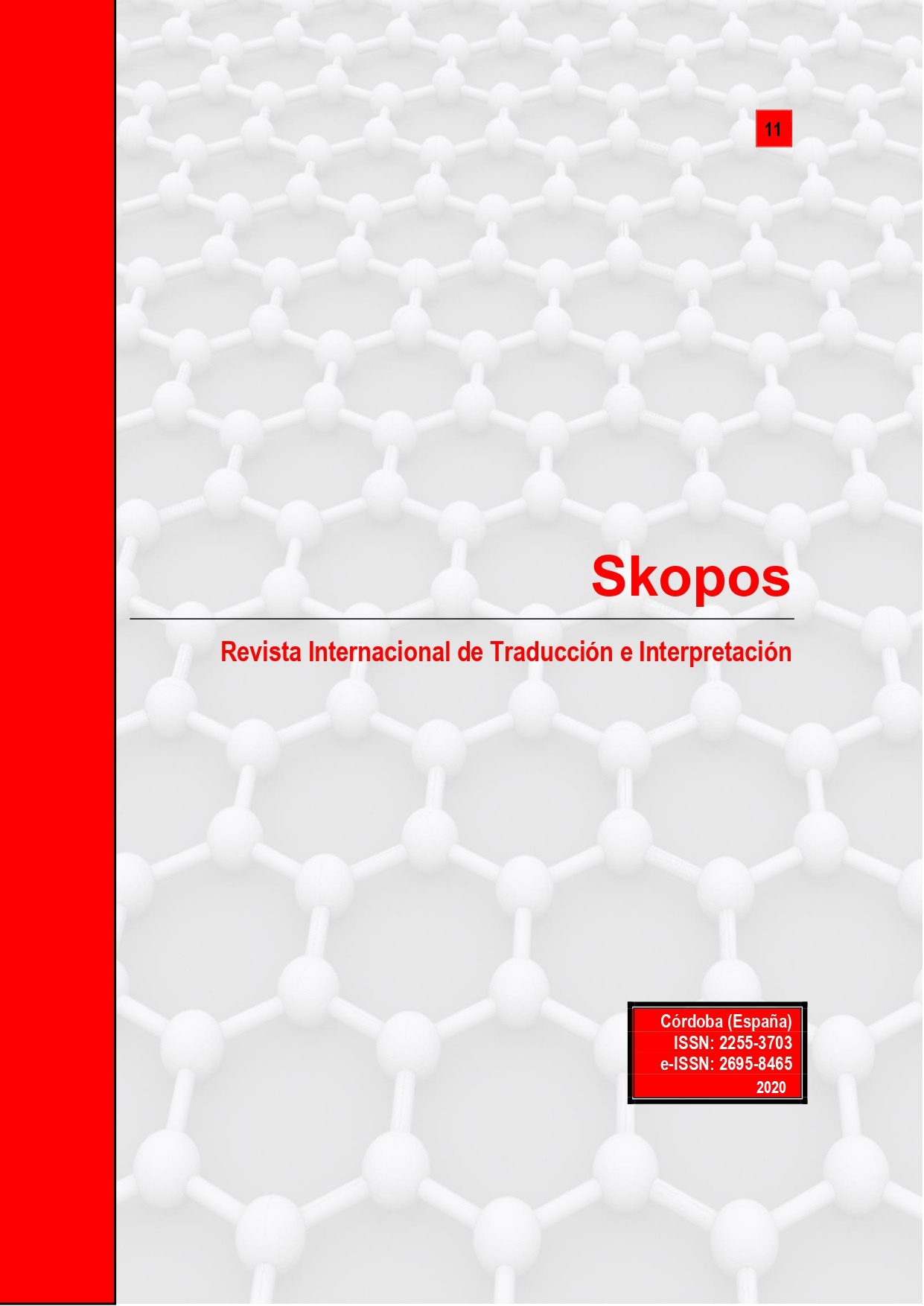Análisis contrastivo de las coincidencias parciales en español, francés y árabe mediante transformaciones lingüísticas
DOI:
https://doi.org/10.21071/skopos.v11i.12960Abstract
Computer-aided translation (CAT) tools have revolutionized the world of translation by automatically storing previous translations and are increasingly offering solutions. However, the person using these systems observes a number of deficiencies particularly in the retrieval of the data matching considered that some work with an algorithm based on the editing distance or distance of Levenshtein. This study offers a possibility to improve the matching by the identification of the syntactic and semantic difficulties and the limitation faced by a translation memory with ten types of transformations in different linguistic combinations: Spanish-French/French-Spanish/Arabic-Spanish. The results show certain limitation in both ES-FR/FR-ES combinations and even more between AR-ES that can be reduced by integrating linguistic knowledge and increasing the matching level for the greatest benefit of the translator.
Downloads
Published
How to Cite
Issue
Section
License
Política propuesta para revistas que ofrecen acceso abierto. Aquellos autores/as que tengan publicaciones con esta revista, aceptan los términos siguientes:
- Los autores/as conservarán sus derechos de autor y garantizarán a la revista el derecho de primera publicación de su obra, el cuál estará simultáneamente sujeto a la Licencia de reconocimiento de Creative Commons que permite a terceros compartir la obra siempre que se indique su autor y su primera publicación esta revista.
- Los autores/as podrán adoptar otros acuerdos de licencia no exclusiva de distribución de la versión de la obra publicada (p. ej.: depositarla en un archivo telemático institucional o publicarla en un volumen monográfico) siempre que se indique la publicación inicial en esta revista.
- Se permite y recomienda a los autores/as difundir su obra a través de Internet (p. ej.: en archivos telemáticos institucionales o en su página web) antes y durante el proceso de envío, lo cual puede producir intercambios interesantes y aumentar las citas de la obra publicada. (Véase El efecto del acceso abierto).






